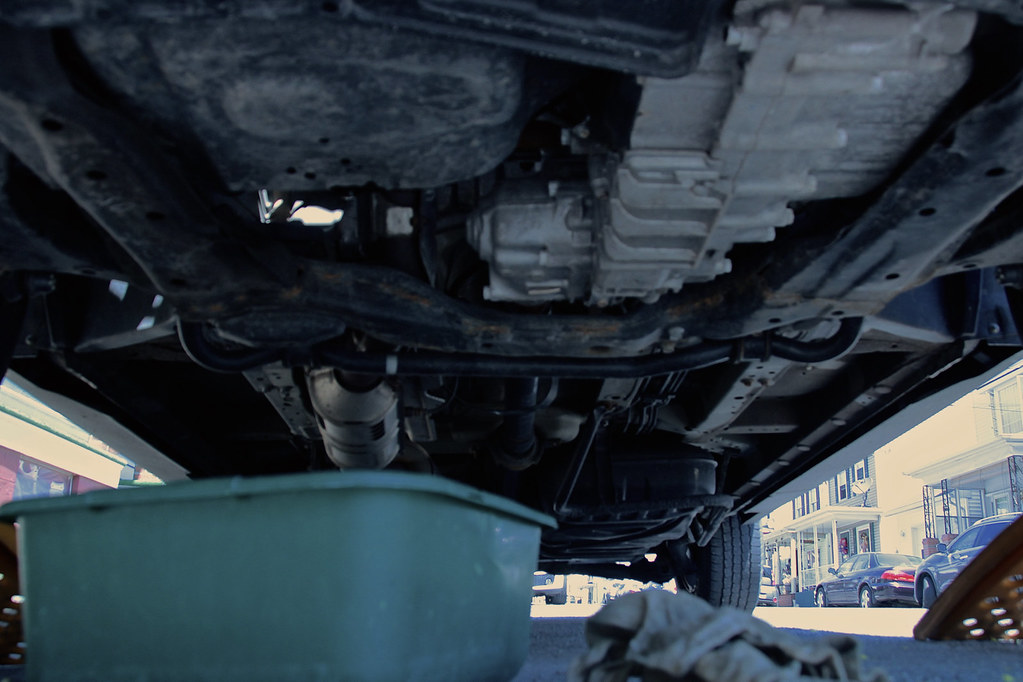
Most people understand that regularly changing their car’s oil is a fundamental aspect of vehicle maintenance. It’s an undeniable truth that oil changes are important, and Consumer Reports emphasizes that regularly scheduled oil changes can be the key to keeping your car on the road for miles to come. In fact, they warn that even missing one oil change can contribute to premature engine wear, or cause damage and reduce the chances of your car remaining reliable for long.
Despite this universal understanding of its importance, the world of oil changes is, unfortunately, rife with misconceptions, outdated advice, and outright myths. As a senior media editor with years of experience navigating the automotive landscape, I’ve heard countless stories and seen firsthand how these persistent fictions can lead to unnecessary stress, wasted money, and even potential harm to an engine. It’s time to cut through the noise and provide clear, actionable information.
The automotive industry has evolved significantly, with advancements in engine technology and oil formulations continually pushing the boundaries of what’s possible. Yet, a lot of drivers are still working off advice that hasn’t changed since their parents, or even grandparents, were behind the wheel. We’re here to help separate engine truth from garage gossip, ensuring you make informed decisions that protect your vehicle and your wallet. Let’s bust some of the most common oil change myths out there.

1. **You Have to Change Your Oil Every 3,000 Miles**This might just be the most pervasive and stubborn of all oil change myths. I’ve heard it, you’ve heard it; odds are, we’ve all heard it repeated as gospel. The idea that you absolutely must change your oil every 3,000 miles was once a golden rule, a piece of advice that made sense in an era when engines ran dirtier and oil formulations broke down far more quickly. However, modern engines and advanced oils have fundamentally changed this landscape.
Today, the 3,000-mile myth is simply outdated. According to Edmunds, the majority of automakers today call for oil changes at either 7,500 or 10,000 miles. For some vehicles, that interval can even go as high as 15,000 miles. These numbers are far and above the mythical 3,000 miles, reflecting the significant improvements in engine design and the longevity of modern lubricants.
Blindly sticking to a 3,000-mile or even a 3-month schedule is often a waste of time, money, and resources. Changing oil too soon not only adds to your expenses but also contributes to environmental waste from unnecessary disposal. While certain severe driving conditions, such as frequent short trips, extreme temperatures, or heavy towing, might necessitate slightly shorter intervals, for the average driver, adhering to the manufacturer’s recommended schedule is perfectly sufficient.
The best guidance you can get comes directly from your vehicle’s creator. We recommend checking your owner’s manual before waiting that long to have your car’s oil changed. They’ve done the extensive research and testing to determine the optimal oil change intervals for your specific vehicle. Trust these expert recommendations over anecdotal advice that simply no longer applies to today’s sophisticated automotive technology.
Read more about: Lights, Camera, Silence: 12 Famous Duos Who Said ‘Cut!’ to Friendship After Filming Wrapped
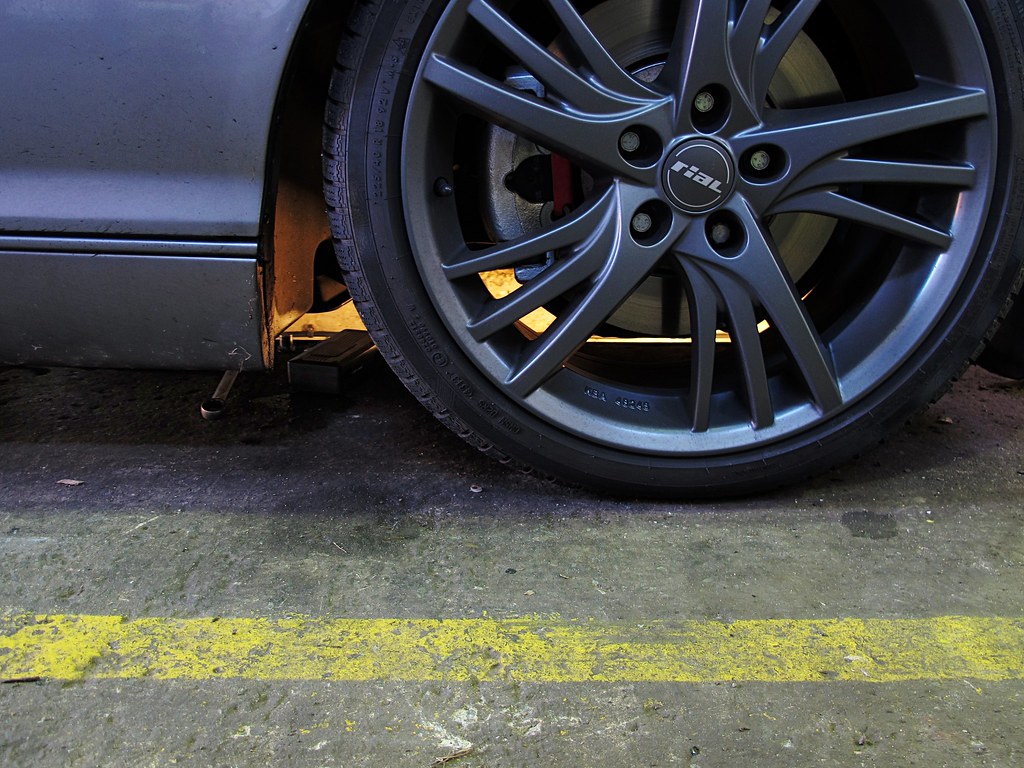
2. **All Oil Additives Are the Same**Another common misconception that often circulates in garages and online forums is the idea that all oil additives are essentially interchangeable, performing the same function regardless of their specific claims. This myth suggests a one-size-fits-all approach to supplemental oil treatments, but this couldn’t be further from the truth. The reality is that the world of oil additives is far more specialized and scientifically engineered than many assume.
According to Christian Brothers Automotive, this common oil change myth is not true at all. They explain that oil additives are specifically engineered to help your car’s engine in different ways, addressing a variety of needs and conditions. These aren’t generic potions; they are carefully formulated chemical compounds designed to enhance specific aspects of oil performance and engine protection.
For instance, some oil additives are designed to keep the oil performing under heavy use, maintaining its viscosity and protective qualities even under extreme stress and high temperatures. Other oil additives are meant to help older, higher-mileage cars last longer, often by conditioning seals, reducing wear in worn parts, or improving detergency to combat sludge buildup that accumulates over years of operation.
Christian Brothers Automotive further clarifies this by stating that if an oil additive says it’s formulated for something specific, there’s likely a good reason for it. This underscores the importance of understanding your engine’s needs and selecting additives, if any, that are specifically designed for those requirements. Simply grabbing any bottle off the shelf without understanding its purpose could be ineffective or, in some cases, even counterproductive to your engine’s health.
Read more about: Don’t Screw Up Your Ride: 15 Common Oil Change Blunders That’ll Leave Your Engine Begging for Mercy

3. **Synthetic Oil Causes Engine Leaks in Older Cars**The myth that synthetic oil causes engine leaks, particularly in older cars, is a persistent one with roots dating back several decades. According to Firestone, this common oil change myth can be traced back to the 1970s when synthetic oil was first introduced to the market. Unfortunately, Firestone notes, this misconception continues to persist, though it mostly concerns older cars rather than newer models, perpetuating an outdated concern.
However, the good news for modern drivers and classic car enthusiasts alike is that synthetic oil doesn’t actually cause engine leaks in older cars today. The original concern stemmed from early synthetic formulations which, due to their chemical composition, could sometimes cause older, harder seals to shrink and lead to leaks. This historical context gave birth to the myth, which has since been disproven by advancements in oil technology.
Today’s synthetic oils are manufactured to be fully compatible with all types of seals and gaskets, whether your engine is brand new or decades old. In fact, Firestone explains, “Synthetic motor oil actually provides better protection for your engine at extreme temperatures,” which is often beneficial for older engines that may run hotter or have less efficient cooling systems. The improved stability and slower breakdown of synthetic oil can significantly benefit an older engine.
If you do observe leaks after switching an older car to synthetic oil, it’s typically not the synthetic oil causing new damage. Instead, it’s more likely that existing seals were already worn or brittle, and the new, more detergent-rich and free-flowing synthetic oil simply makes a pre-existing problem more obvious. Plenty of classic and vintage car owners now confidently run synthetic oil without issue, enjoying its superior protection and longevity.
Read more about: 12 Car Maintenance Myths That Are Costing You Money: A Consumer Reports Deep Dive
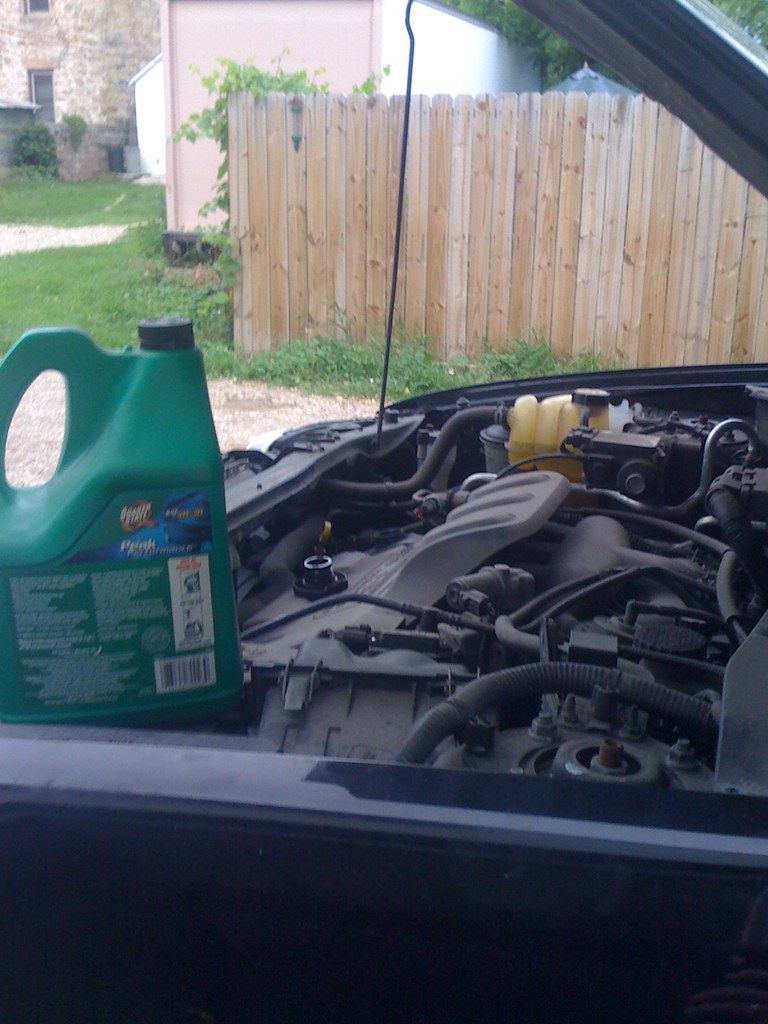
4. **You Can’t Switch Between Synthetic and Conventional Oil**Among the many circulating myths, the belief that once you switch to synthetic oil, you’re locked in and can never return to conventional, or that mixing the two is detrimental, is one of the most persistent. This creates unnecessary anxiety for car owners who might want to explore different oil options or who simply find themselves in a situation where only one type is available for a top-up. Fortunately, much like other common oil change myths, this one is not true in the slightest.
In reality, Penzoil reports, you can switch back and forth between synthetic and conventional oil basically anytime without causing harm to your engine. The automotive industry has developed standardized oil formulations, and both conventional and synthetic oils are designed to meet specific performance criteria and lubrication standards. This compatibility means your engine isn’t going to seize up or suffer damage just because you changed oil types.
Furthermore, the concept of a “synthetic blend” oil directly contradicts this myth. As Penzoil explains, “Synthetic blends are simply a mixture of synthetic and conventional oils,” offering a middle-ground option for drivers. These blends are widely used and prove that different oil types can coexist harmoniously within an engine system.
While the freedom to switch is reassuring, Penzoil does advise that you use the same oil for top-ups if needed. This practice ensures consistency in your engine’s lubrication and helps maintain the best protection from the specific oil you have chosen, allowing its full additive package to work as intended. The critical factor remains adhering to the viscosity and specifications recommended in your owner’s manual, regardless of whether you choose conventional, synthetic, or a blend.
Read more about: The Algorithmic Battlefield: A Deep Dive into the US-China AI Arms Race and the Urgent Call for Global Governance
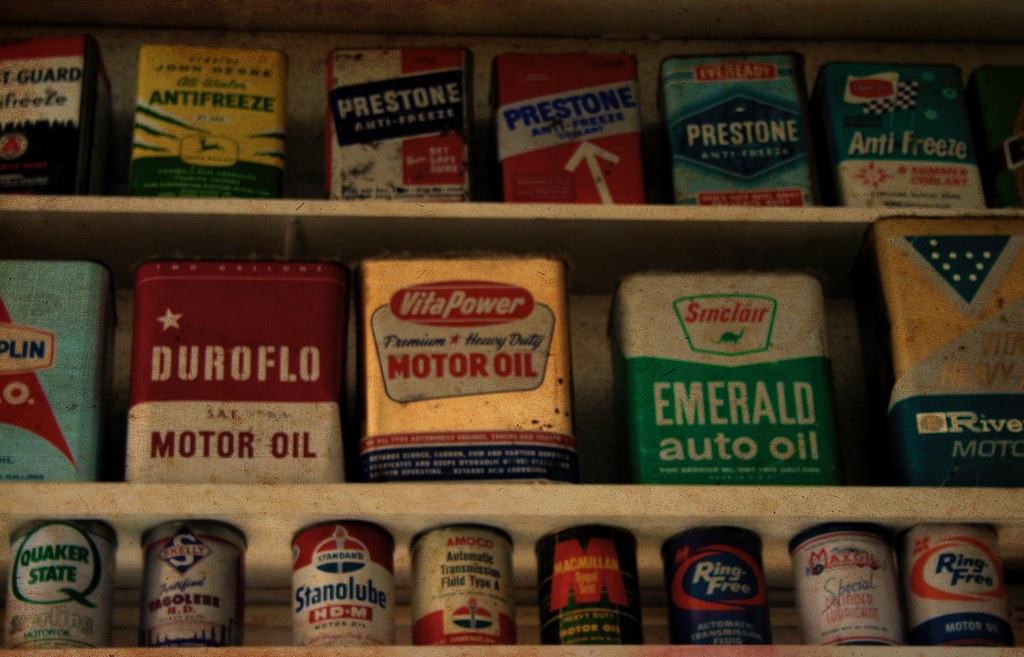
5. **You Should Visit a Dealer to Have Your Oil Changed**Many car owners operate under the assumption that having their vehicle’s oil changed at the dealership is not only the safest option but also the only way to ensure their car’s warranty coverage remains intact. This belief, however, is a common oil change myth that can unnecessarily limit your choices and potentially increase your maintenance costs. It’s a perception that the dealer holds exclusive knowledge or proprietary methods, which isn’t always the case for routine service like an oil change.
While it’s true that a dealership’s service department may indeed know more about your specific vehicle than an ordinary independent shop, the critical point is that you will not void the warranty by taking it elsewhere. Do It Yourself explicitly explains, “As long as you keep records of when you had the oil changed, you will be good to go.” This crucial piece of information liberates car owners from feeling obligated to use expensive dealership services for basic maintenance.
The key to maintaining your warranty, regardless of where you get your oil changed, lies in diligent record-keeping. Always retain receipts, invoices, and any documentation that clearly shows when and where your oil changes were performed, what type of oil was used, and the mileage at the time of service. These records serve as undeniable proof that you have adhered to the manufacturer’s recommended maintenance schedule.
Many reputable independent shops offer competitive pricing and excellent service, often providing the same quality parts and fluids as a dealership. They also frequently include additional checks, such as fluid top-offs, tire pressure adjustments, and belt inspections, just like larger service centers. Ultimately, the choice of where to get your oil changed comes down to convenience, cost, and trust, rather than a warranty obligation.
Read more about: Beyond the Chrome: Unmasking 13 Car Driver Stereotypes That Are More Than Just Roadside Chatter

6. **Only High-Performance Synthetic Oil is Good Enough**There’s a persistent idea circulating among car enthusiasts and everyday drivers alike that to truly keep your engine running like a dream, you absolutely must use the most expensive, high-performance synthetic oil available. This myth often implies that conventional oil is somehow inferior or inadequate for modern engines, suggesting that anything less than premium synthetic is a disservice to your vehicle. While synthetic oils do offer distinct advantages, this blanket statement overlooks the practical needs of many vehicles.
The truth is, unless your car specifically calls for synthetic oil in its owner’s manual, the standard conventional stuff will do just fine. Many cars are perfectly designed to run on conventional oil, and using it won’t lead to premature wear or decreased performance if the recommended change intervals are followed. In fact, some cars are engineered in such a way that they actually perform better with conventional oil than with certain synthetic formulations, depending on the engine’s design and operating characteristics.
It’s undeniable that synthetic oil does offer some additional benefits, particularly in terms of improved engine wear protection, better resistance to extreme temperatures, and extended oil change intervals. However, for the average driver who isn’t pushing their car to its limits, towing heavy loads regularly, or driving a high-performance sports car, the difference in engine longevity compared to a quality conventional oil (when changed on schedule) is often negligible. The extra cost of synthetic oil may simply not be worth it for these applications.
Ultimately, one of the biggest factors in determining your engine’s longevity is the overall quality of the oil you use, not necessarily whether it’s synthetic or conventional, and definitely not its price tag. Cheap, low-quality oils, regardless of type, can indeed lead to more rapid engine wear and degradation over time. Conversely, a high-quality oil—whether conventional, a synthetic blend, or full synthetic—that meets your manufacturer’s specifications will provide superior protection. The key is to follow the manufacturer’s recommendations and choose a quality product that fits your vehicle’s specific requirements. This strikes the right balance between protection and cost, without falling prey to the belief that only the most expensive option is viable.
Read more about: Unlocking the ‘Magical’ Scratch Erasers: Top Car Finish Solutions That Deliver Instant Results, With or Without a Buffing Tool!

7. **The Dangerous Practice of Waiting for Engine Noise as a Signal for an Oil Change**It’s a dangerously misguided belief that engine oil changes are necessary only when the engine starts making unusual noises. This ‘wait and see’ approach can lead to severe, irreversible damage. Expert mechanics stress that relying on engine noise as a cue is a widespread misconception that ignores the fundamental principles of preventative care, ultimately compromising your engine’s health and increasing the risk of costly repairs.
The core problem lies in oil degradation. Engine oil deteriorates over time due to heat, contaminants, and chemical breakdown, regardless of how often you drive. Even if your engine sounds normal, the oil may be past its prime and ineffective at lubricating crucial components. Many engine problems develop silently, meaning that by the time you hear knocking or grinding, significant wear or damage has already occurred, often indicating an advanced stage of malfunction.
Vehicle manufacturers provide specific guidelines for oil change intervals based on mileage or time—typically every 5,000 to 7,500 miles, or every six to twelve months. These expert-backed schedules are designed to ensure consistent lubrication and protection, preserving engine health. Adhering to these recommendations is paramount, as they are based on extensive testing and engineering data for your specific vehicle, providing the most reliable guidance for maintenance.
Regular oil changes are a cornerstone of preventative maintenance, actively preventing sludge buildup and maintaining oil integrity. Rather than waiting for a crisis signal, proactively following the manufacturer’s schedule is the most reliable way to ensure your engine receives the necessary care, keeping it a dependable partner on the road for years to come. This approach avoids reactionary measures and secures long-term vehicle reliability and performance.
Read more about: 15 Essential Car Maintenance Checks to Shield Your Wallet and Drive Safely: A Consumer Reports Guide to Preventing Roadside Breakdowns
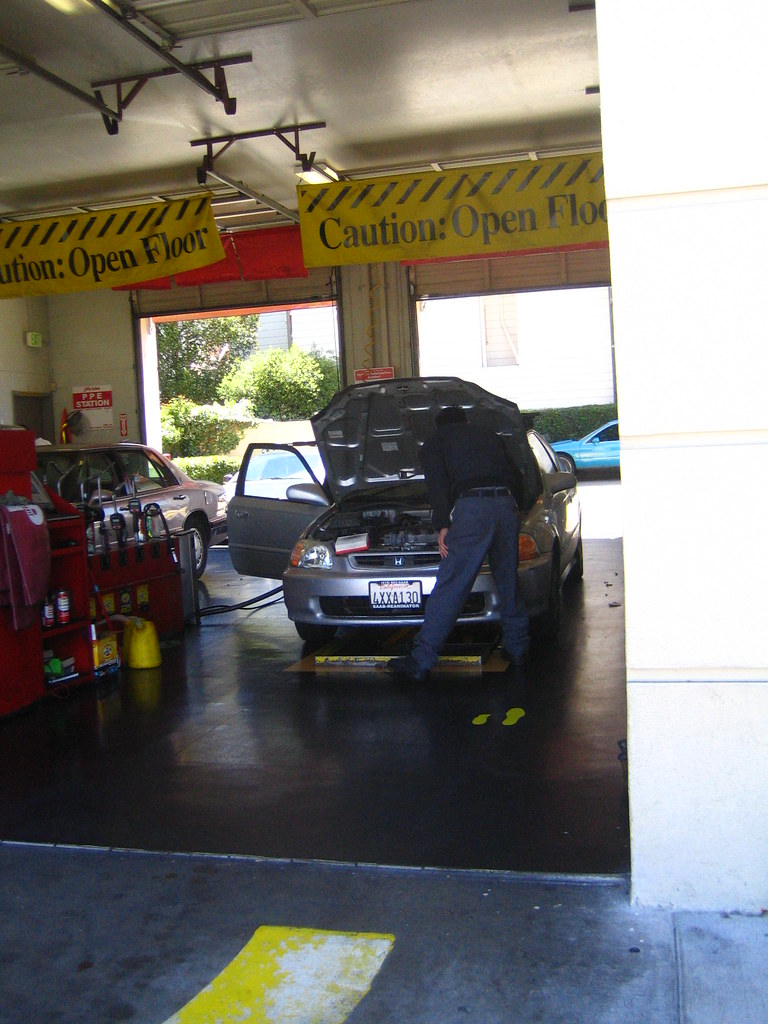
8. **The Incorrect Assumption That Thicker Oil Inherently Provides Superior Engine Protection**Many car owners mistakenly believe that thicker oil provides superior engine protection, reasoning that a denser lubricant forms a more robust barrier against wear. However, expert mechanics emphasize that oil viscosity must precisely match the manufacturer’s specifications for optimal performance, not exceed it. This misconception can actually be counterproductive, leading to various detrimental effects within a meticulously engineered engine system.
Thicker oil does not inherently provide better protection. In fact, it can struggle to flow easily, especially during cold starts, which are critical moments for engine lubrication. Inadequate oil circulation at startup means vital components are left unprotected, accelerating wear rather than reducing it. Modern engines are built with incredibly tight tolerances, relying on a specific oil grade to penetrate small spaces effectively and maintain a stable lubricating film under all operating conditions.
Furthermore, using the incorrect viscosity significantly impacts engine efficiency. Thicker oil creates additional internal resistance, forcing the engine to work harder. This increased effort translates into reduced fuel economy and potentially higher operating temperatures, which can lead to premature component wear and compromise seals. It’s a delicate balance that engineers have carefully calibrated for your specific vehicle’s design and operational requirements.
Therefore, the most crucial factor is always to adhere to the specifications outlined in your vehicle’s owner’s manual. This resource provides the exact viscosity and oil type your engine was designed for, ensuring proper lubrication, peak performance, and efficient fuel economy. Blindly opting for a thicker oil based on a myth risks disrupting this balance and inviting potential problems that could compromise your engine’s health.
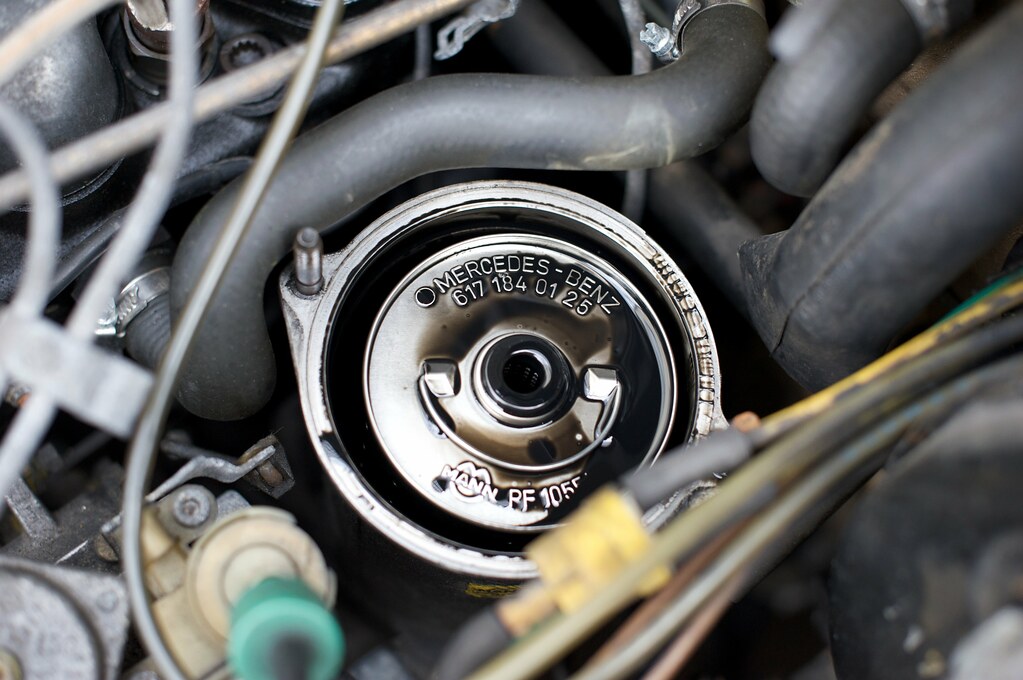
9. **The Misleading Belief That Oil Color Accurately Indicates Its Condition or Need for Replacement**
One of the most persistent and visually misleading myths is that oil color accurately indicates its condition or when it needs changing. Many drivers assume darker oil is bad and lighter oil is good. This assumption is fundamentally flawed, potentially leading to unnecessary oil changes or, worse, neglecting maintenance when oil appears fine but is failing to protect the engine effectively.
Engine oil almost invariably darkens as it performs its vital duties. This color change isn’t a sign it’s ‘gone bad’; it’s proof it’s working. As oil circulates, it picks up combustion byproducts and microscopic contaminants. Modern oils contain detergents and dispersants designed to hold these particles in suspension, preventing harmful deposits from settling on engine components. A dark appearance often means the oil is actively cleaning, not necessarily that it has lost its lubricating properties.
Color alone is not a reliable method to judge oil life. The initial color varies by oil type, and changes occur through normal operation. More accurate assessments involve checking viscosity, consistency, or professional oil analysis. For daily drivers, following manufacturer guidelines based on mileage or time, often supported by sophisticated oil-life monitoring systems in newer vehicles, provides far more accurate service intervals than a visual glance at the dipstick alone.
Crucially, oil can appear clean but still be past its prime. Heat, moisture, and chemical breakdown gradually weaken its protective properties and deplete critical additives, regardless of its visual appearance. These additives prevent wear, clean internal parts, and control temperature. Relying on looks instead of established service intervals risks running oil past its useful life, jeopardizing engine performance and longevity. Trust your owner’s manual for timely maintenance, not deceptive appearances.

10. **The Detrimental Habit of Not Changing the Oil Filter with Every Oil Change**Some drivers attempt to extend the life of their oil filter through multiple oil changes, a practice that constitutes cutting corners in the wrong place and can undermine the entire purpose of an oil change. While seemingly minor, the oil filter plays a critical role in maintaining engine health, and neglecting its replacement is a false economy that can invite significant engine damage and accelerate wear.
The oil filter’s job is to trap dirt, metal shavings, and other contaminants generated during engine operation and combustion. These harmful particles, if left to circulate, cause abrasive wear on vital components, leading to premature engine degradation. Once a filter reaches its capacity and is full, its bypass valve opens, allowing dirty oil to flow around the clogged filter and back into the engine. This means your freshly added, clean oil immediately becomes contaminated by particles the old filter can no longer stop.
Skipping a new filter after adding fresh oil is like meticulously cleaning your house but leaving a full, dirty vacuum bag in place for the next cleaning session. Filters are cheap insurance compared to the high cost of engine repairs or rebuilding. To ensure true engine maintenance and clean lubrication, always change the oil filter simultaneously with the oil. This maximizes the effectiveness of your oil change and safeguards your engine’s longevity from the very first mile.
Read more about: Don’t Screw Up Your Ride: 15 Common Oil Change Blunders That’ll Leave Your Engine Begging for Mercy
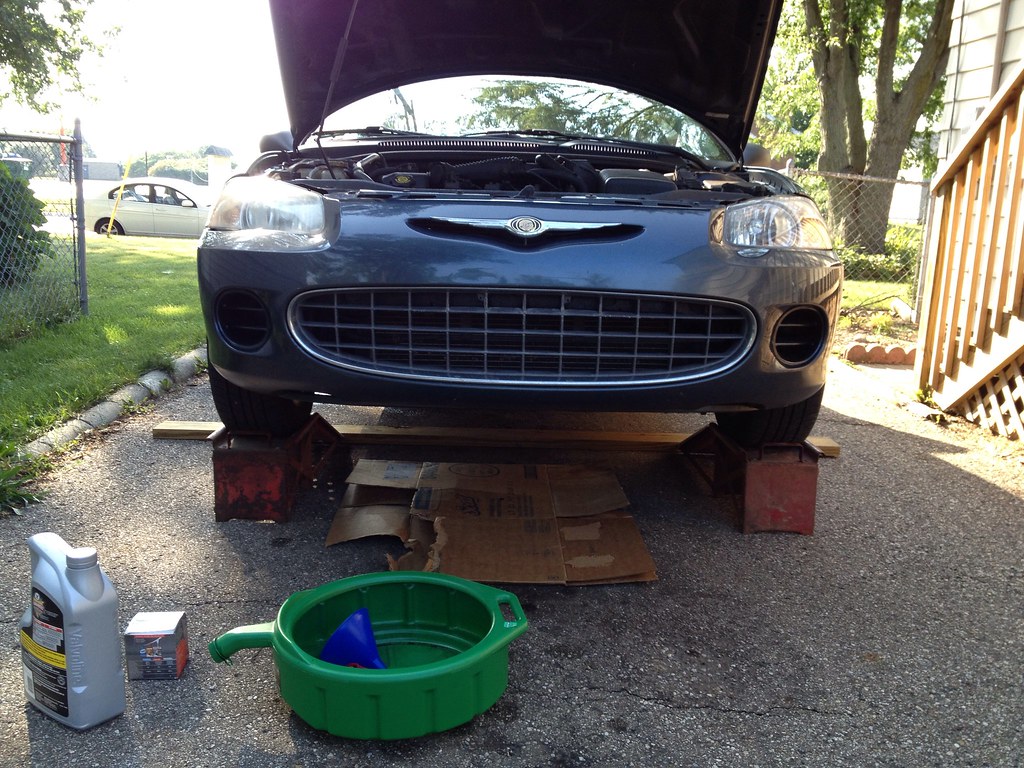
11. **The Misunderstanding That Topping Off Engine Oil Is Equivalent to a Full Oil Change**A common misunderstanding is that topping off engine oil when low is functionally equivalent to a full oil change. While adding oil to the correct level prevents immediate damage from low lubrication, it fundamentally does not address the underlying issues of degraded oil or contaminant accumulation within the system. This myth can lead drivers to neglect essential maintenance, believing they’ve resolved a problem with only a temporary fix.
Topping off ensures correct fluid levels, but it doesn’t rejuvenate the old oil circulating within the engine. The existing, used oil still carries accumulated dirt, fuel residue, moisture, carbon, and depleted additives from its operational life. Fresh oil merely mixes with this compromised fluid, failing to remove harmful elements or restore its full protective capabilities. The overall integrity of the oil remains diminished, with contaminants continuing their slow damage.
An actual oil change involves completely draining the old, contaminated oil from the engine, removing most accumulated harmful particles and byproducts. The engine then receives a full, fresh dose of brand-new oil, complete with its untouched additive package ready to provide optimal protection, cleaning, and temperature control. Topping off is a short-term measure; only a complete change truly refreshes the system, which is vital for long-term engine health. It’s like adding clean water to a muddy glass – the glass may be fuller, but the water isn’t clean.
Read more about: Steering Clear of Costly Car Button Blunders: Essential DIY & Key Fob Mistakes That Could Drain Your Wallet
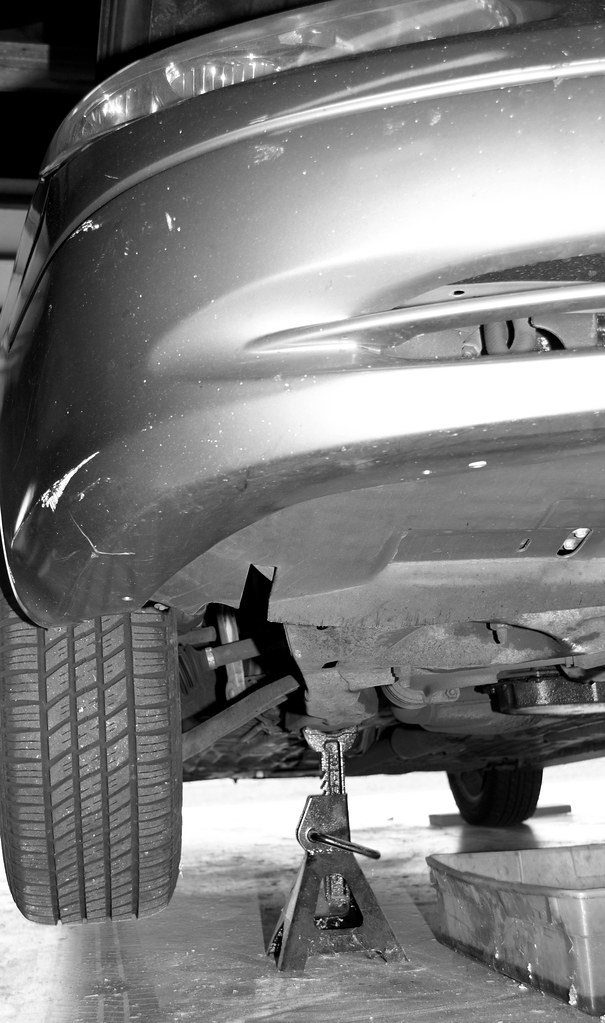
12. **The Myth That Flushing Your Oil System Is a Necessary or Beneficial Maintenance Practice**Among the various automotive myths that stubbornly persist, the idea that flushing your oil system is a necessary or significantly beneficial maintenance practice is particularly resilient, despite a notable lack of evidence supporting its widespread utility. This concept often sells itself on the promise of magically ridding your engine of all built-up sludge and contaminants, purportedly leaving it ‘like new.’ However, for a well-maintained engine, expert mechanics agree that a quality oil change with the correct filter is almost always all your engine truly needs to stay healthy and perform optimally.
An oil flush can be more akin to a gimmick than a genuine necessity for the average vehicle. Modern engine oils are formulated with powerful detergents and dispersants that effectively clean the engine as they circulate, keeping contaminants in suspension until they are drained during a regular oil change. Therefore, if you’ve been adhering to your manufacturer’s recommended oil change schedule and using quality oil, your engine’s internal components should already be remarkably clean, and an aggressive flush is unlikely to offer any additional, meaningful benefit.
In fact, forcing a chemical flush through an engine that is already in decent shape can, ironically, do more harm than good. The ‘built-up gunk’ that a flush is designed to remove isn’t always detrimental; sometimes, it consists of harmless deposits that have settled in non-critical areas or even coatings that offer a degree of protection. When a powerful flush violently dislodges these deposits, it can potentially cause them to circulate and clog critical oil passages, leading to oil starvation in vital components. This can expose delicate internal parts to unnecessary wear, rather than enhancing longevity.
Instances where an oil flush might be cautiously considered are very rare and typically limited to extreme cases. For example, if an engine has suffered from years of neglect, has consistently used very cheap, low-quality oil, or has experienced severe sludge build-up due to extreme extended oil change intervals, a carefully performed flush might be warranted. Even in such dire situations, it is absolutely essential to consult with a trusted, experienced mechanic who can assess the specific condition of your engine and advise on the safest course of action. Blindly subjecting your car to such an extreme measure based on a myth is a significant risk.
**Conclusion: Trust the Experts, Not the Myths**
So, there you have it: the inside scoop on the most tenacious oil change myths that mechanics wish would just disappear. We’ve journeyed through the intricacies of engine care, from debunking the ancient 3,000-mile mantra to demystifying oil color, and clarified why an oil filter is as crucial as the oil itself. The automotive world is constantly evolving, and what was once gospel decades ago simply doesn’t apply to the sophisticated machines we drive today. By embracing up-to-date, fact-based information, you’re not just performing maintenance; you’re making informed decisions that directly impact your vehicle’s health and your wallet’s well-being.
Read more about: Engine Specialist’s Essential Guide: Master Hill Climbs and Prevent Overheating Without Ever Pulling Over
Your engine is a complex, vital component of your vehicle, deserving of precise and informed care. Letting go of these widespread misconceptions allows you to protect your investment more effectively, avoid unnecessary expenses, and ultimately enjoy greater peace of mind every time you hit the road. Trust the experts, consult your owner’s manual, and choose quality over fads. Armed with accurate knowledge, you can confidently navigate the world of automotive maintenance, ensuring your car runs stronger, longer, and more efficiently. Here’s to clear roads and myth-free motoring!




